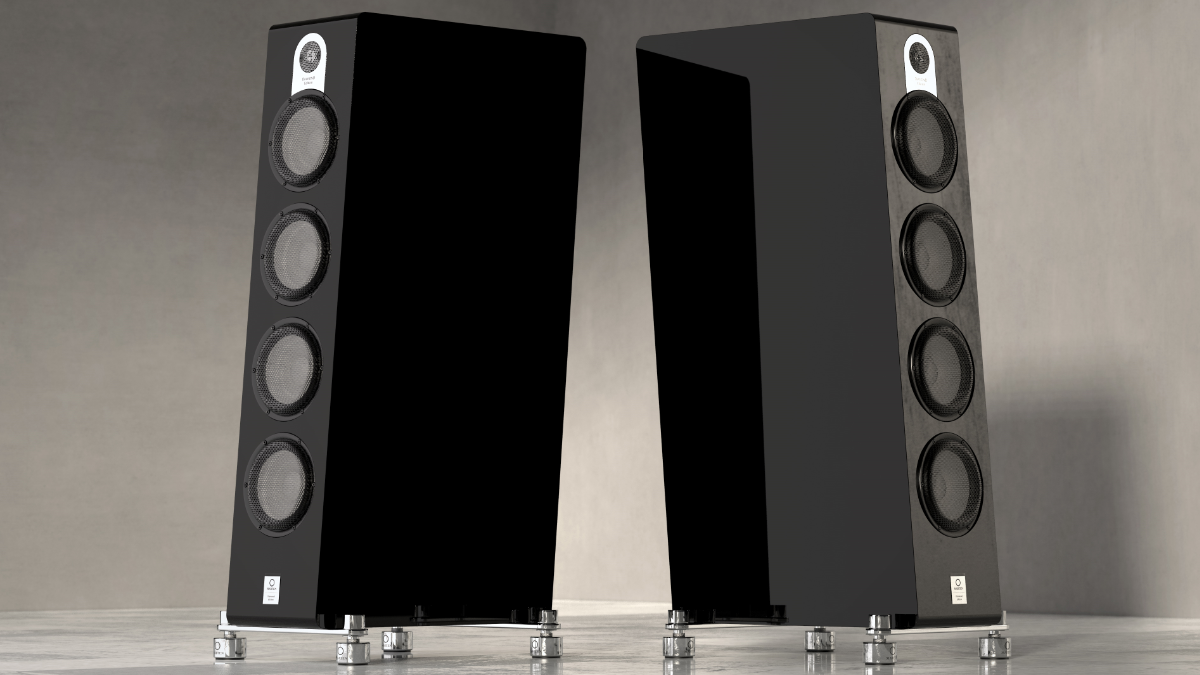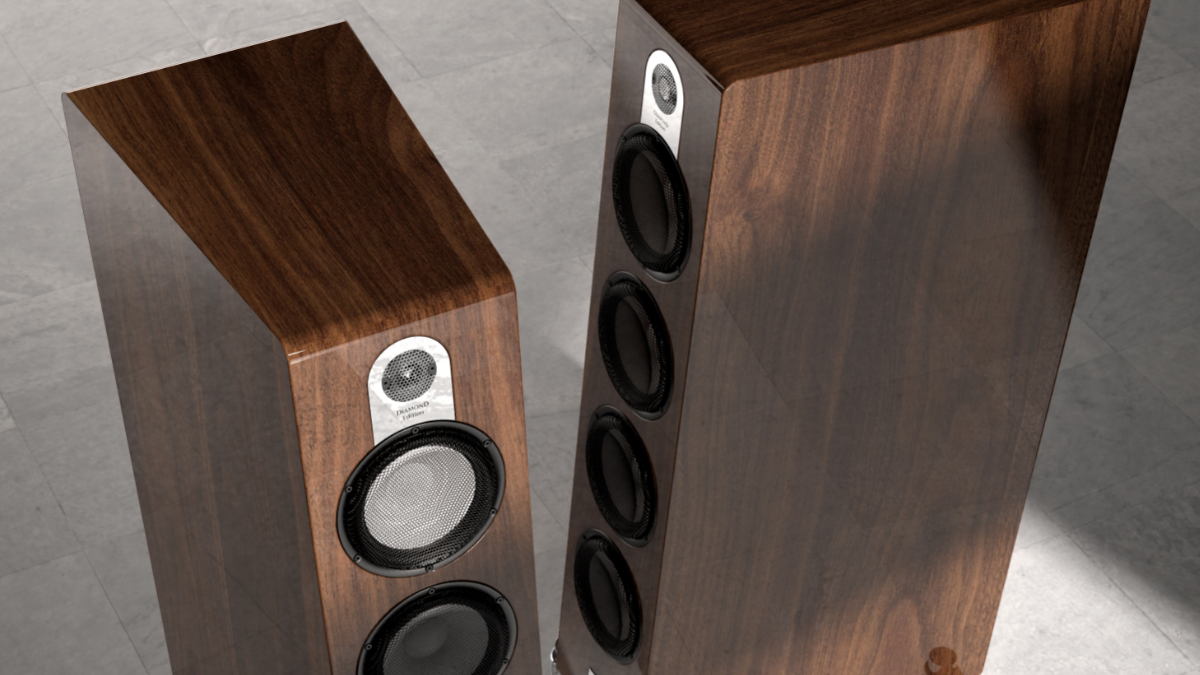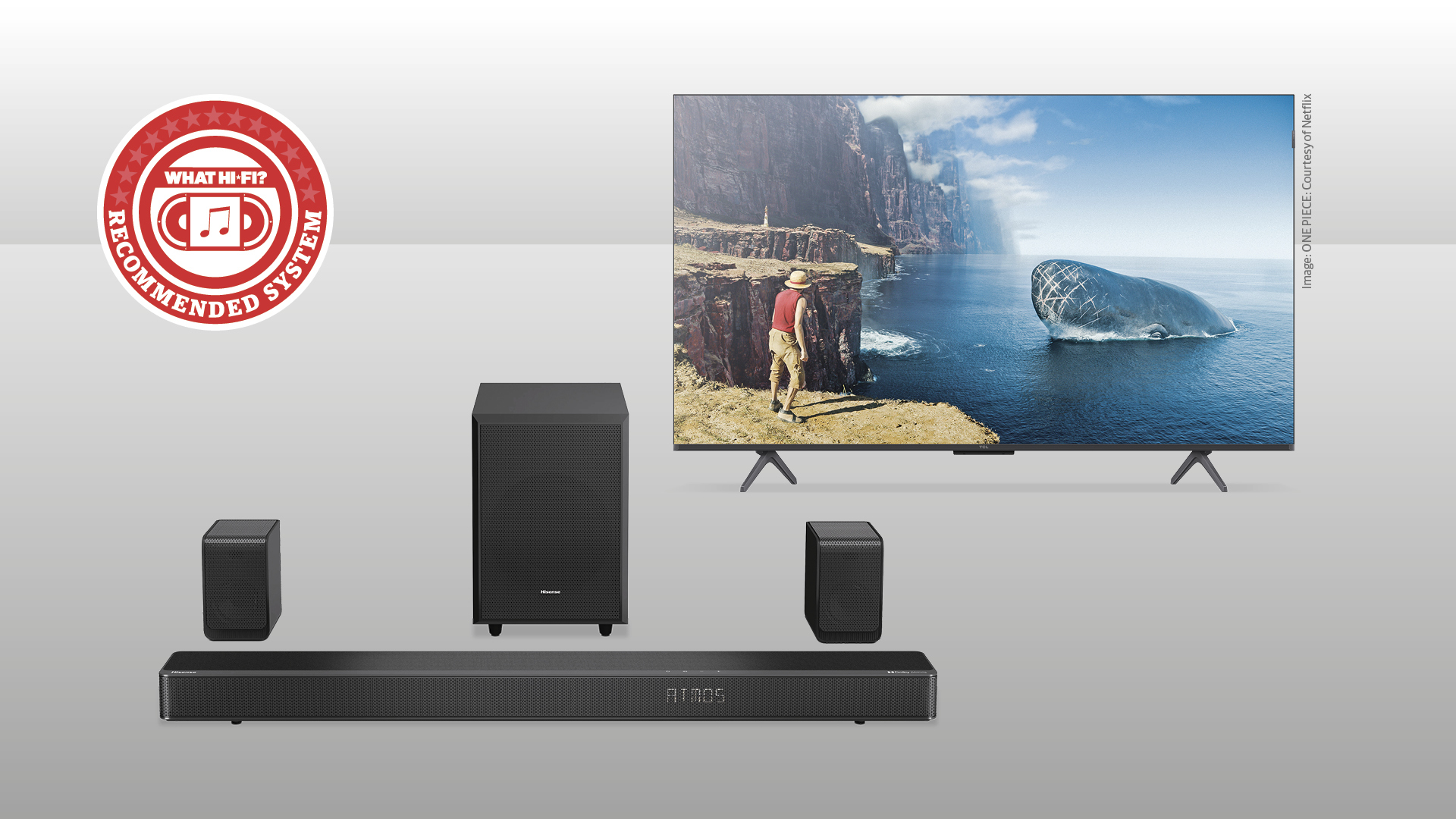Marten's new Parker speakers use a fresh crossover topology and diamond tweeters
But ceramic tweeters remain an option for all three models

Marten's newly launched Parker range comprises the Quintet, the Trio and the Duo but because all three models come in two versions – ’Standard’ and ‘Diamond’ – there are effectively six models in the range, with the flagship being the 2.5-way floorstanding Quintet Diamond (pictured above).
The prime difference between the two versions is that the Diamond models have a diamond tweeter rather than a ceramic one, but other differences include the use of top-of-the-range Jorma Statement cabling internally, and the use of copper foil capacitors rather than polypropylene types in the Diamond versions.
If you’re familiar with the speakers from Swedish manufacturer Marten Audio, you’ll have already guessed that the three models in its latest series of speakers are all named after famous jazz saxophonist Charlie ‘Bird’ Parker.
Initially, we found this a little strange, because Marten had already paid homage to Bird by naming a model in its Heritage Series after hime (the Marten Bird 2), but it all became clear after we asked Marten’s chief designer, Leif Olofsson, about it.
“The whole thing actually began as an update to the Heritage series,” he said, “but the upgrades to technology and build were so radical that we created a new series instead.”
When Olofsson says ‘radical’ he means it, because he says that all the drivers in the new Parker series were designed specifically for it by him, and all are ‘bespoke’ designs, having not appeared on any previous Marten model.

The Parker Quintet Diamond may be a 2.5-way design, but it has five active drivers: four bass/midrange drivers and a diamond tweeter, plus four 190mm diameter passive radiators (mounted on the rear panel).
The latest hi-fi, home cinema and tech news, reviews, buying advice and deals, direct to your inbox.
The cabinet has sleek, tapering sides that are made from Marten Audio’s ‘M-Board’ which it describes as a multi-layered material which offers extreme resonance reduction. “The result is a cabinet so resonance-free, that it completely disappears within the soundstage,” says Olofsson.
The crossover network’s circuit is apparently a new topology for Marten, with Olofsson describing it as a ‘multi-diverse’ design that ensures high system efficiency (Marten specs the Quintet Diamond’s sensitivity at 93dBSPL).
All models are available in three standard finishes (Piano Walnut, Matte Walnut and Piano Black) but custom bespoke finishes are available as an option.
Based on representative pricing supplied by Marten, a fully-optioned pair of Marten Audio Quintet Diamonds in a standard finish should sell for around £33,900 per pair (approximately €38,000 / $41,399 / AU$68,000) but prices are yet to be finalised.

The smallest model in the new series, the Parker Duo, is a two-way standmount design that, rather unusually for a two-way speaker, also has a 230mm passive radiator. “When it comes to bass, we chose passive radiators to give the control and dynamics needed for a speaker of this class,” said Olofsson.
The Parker Duo uses the same 190mm bass/midrange driver as the more expensive models in the range and the same 25mm tweeter; ceramic or diamond. Marten specifies the frequency response as 36Hz–40kHz ±2dB, the impedance as 6Ω (3.1Ω minimum) and the sensitivity as 88dBSPL (1M/2.83V).
“The Duo is amazing for its ability to command a very large living space, despite its small size,” said Boris Granovsky, of Absolute HiEnd, which distributes Marten in Australia. “It works fabulously well in any room, which is a real tribute to the quality of the driver units, cabinet and crossover.”
Pricing for the Marten Audio Duo speakers has also yet to be confirmed, but it's estimated they will retail for around £7999 per pair (approximately €9000 / $9699 / AU$16,500).
Australian Hi-Fi is one of What Hi-Fi?’s sister titles from Down Under and Australia’s longest-running and most successful hi-fi magazines, having been in continuous publication since 1969. Now edited by What Hi-Fi?'s Becky Roberts, every issue is packed with authoritative reviews of hi-fi equipment ranging from portables to state-of-the-art audiophile systems (and everything in between), information on new product launches, and ‘how-to’ articles to help you get the best quality sound for your home.
Click here for more information about Australian Hi-Fi, including links to buy individual digital editions and details on how best to subscribe.

